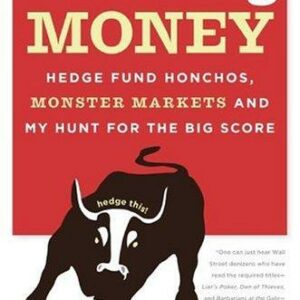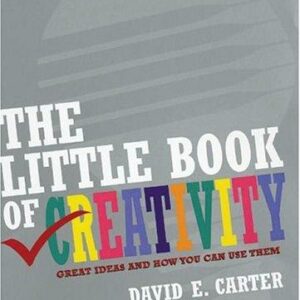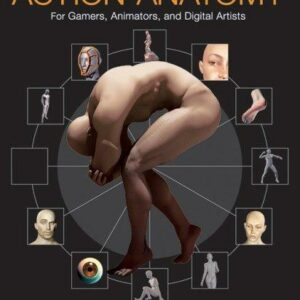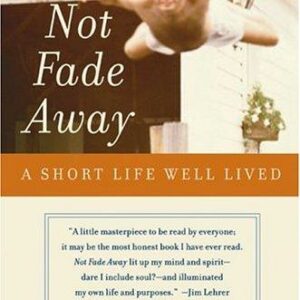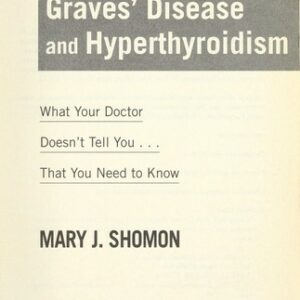The Art of Possibility
$18.00
| Title | Range | Discount |
|---|---|---|
| Trade Discount | 5 + | 25% |
- Description
- Additional information
Description
Description
A NATIONAL BESTSELLER
Discover the twelve breakthrough practices for bringing creativity and a sense of possibility into all of your endeavors in this bestselling guide from the author of Pathways to Possibility
Presenting twelve breakthrough practices for bringing creativity into all human endeavors, The Art of Possibility is the dynamic product of an extraordinary partnership. The Art of Possibility combines Benjamin Zander’s experience as conductor of the Boston Philharmonic and his talent as a teacher and communicator with psychotherapist Rosamund Stone Zander’s genius for designing innovative paradigms for personal and professional fulfillment. The authors’ harmoniously interwoven perspectives provide a deep sense of the powerful role that the notion of possibility can play in every aspect of life. Through uplifting stories, parables, and personal anecdotes, the Zanders invite us to become passionate communicators, leaders, and performers whose lives radiate possibility into the world.An Invitation to Possibility
Launching the Journey
THE PRACTICES:
1. It’s All Invented
2. Stepping into a Universe of Possibility
3. Giving an A
4. Being a Contribution
5. Leading from Any Chair
6. Rule Number 6
7. The Way Things Are
8. Giving Way to Passion
9. Lighting a Spark
10. Being the Board
11. Creating Frameworks for Possibility
12. Telling the WE Story
Coda
Acknowledgments
A Guide to the Stories
About the Authors
“As applicable in the workplace as in an intimate relationship.” —The Boston Globe
“In the presence of either Zander, one’s spirit soars. Now they reveal their secrets in a deeply satisfying book. I guarantee you’ll be inspired.” —Gail Sheehy
“The passionate energy permeating The Art of Possibility is a true force for every reader for self-development and life fulfillment.” —Klaus Schwab, founder and president, World Economic Forum
ROSAMUND STONE ZANDER is the author of The Art of Possibility (with Benjamin Zander) and Pathways to Possibility. Trained as a family systems therapist, she coaches organizations from the inside out. Ms. Zander has brought wisdom, humor, and enlightenment to people in a wide variety of settings, from school systems, hospitals, and corporations to the World Economic Forum.Chapter One
THE FIRST PRACTICE
It’s All Invented
A shoe factory sends two marketing scouts to a region of Africa to study the prospects for expanding business. One sends back a telegram saying,SITUATION HOPELESS STOP NO ONE WEARS SHOESThe other writes back triumphantly,GLORIOUS BUSINESS OPPORTUNITY STOP THEY HAVE NO SHOES
To the marketing expert who sees no shoes, all the evidence points to hopelessness. To his colleague, the same conditions point to abundance and possibility. Each scout comes to the scene with his own perspective; each returns telling a different tale. Indeed, all of life comes to us in narrative form; it’s a story we tell.
The roots of this phenomenon go much deeper than just attitude or personality. Experiments in neuroscience have demonstrated that we reach an understanding of the world in roughly this sequence: first, our senses bring us selective information about what is out there; second, the brain constructs its own simulation of the sensations; and only then, third, do we have our first conscious experience of our milieu. The world comes into our consciousness in the form of a map already drawn, a story already told, a hypothesis, a construction of our own making.
A now-classic 1953 experiment revealed to stunned researchers that a frog’s eye is capable of perceiving only four types of phenomena:
· Clear lines of contrast
· Sudden changes in illumination
· Outlines in motion
· Curves of outlines of small, dark objects
A frog does not “see” its mother’s face, it cannot appreciate a sunset, nor even the nuances of color. It “sees” only what it needs to see in order to eat and to avoid being eaten: small tasty bugs, or the sudden movement of a stork coming in its direction. The frog’s eye delivers extremely selective information to the frog’s brain. The frog perceives only that which fits into its hardwired categories of perception.
Human eyes are selective, too, though magnitudes more complex than those of the frog. We think we can see “everything,” until we remember that bees make out patterns written in ultraviolet light on flowers, and owls see in the dark. The senses of every species are fine-tuned to perceive information critical to their survival—dogs hear sounds above our range of hearing, insects pick up molecular traces emitted from potential mates acres away.
We perceive only the sensations we are programmed to receive, and our awareness is further restricted by the fact that we recognize only those for which we have mental maps or categories.
The British neuropsychologist Richard Gregory wrote, “The senses do not give us a picture of the world directly; rather they provide evidence for the checking of hypotheses about what lies before us.” And neurophysiologist Donald O. Hebb says, “The `real world’ is a construct, and some of the peculiarities of scientific thought become more intelligible when this fact is recognized … Einstein himself in 1926 told Heisenberg it was nonsense to found a theory on observable facts alone: `In reality the very opposite happens. It is theory which decides what we can observe.'”
We see a map of the world, not the world itself. But what kind of map is the brain inclined to draw? The answer comes from one of the dictates of evolution, the survival of the fittest. Fundamentally, it is a map that has to do with our very survival; it evolved to provide, as a first priority, information on immediate dangers to life and limb, the ability to distinguish friends and foes, the wherewithal to find food and resources and opportunities for procreation. The world appears to us sorted and packaged in this way, substantially enriched by the categories of culture we live in, by learning, and by the meanings we form out of the unique journey each of us travels.
See how thoroughly the map and its categories govern our perception. In a famous experiment, the Me’en people of Ethiopia were presented for the first time with photographs of people and animals, but were unable to “read” the two-dimensional image. “They felt the paper, sniffed it, crumpled it, and listened to the crackling noise it made; they nipped off little bits and chewed them to taste it.” Yet people in our modern world easily equate the photographic image with the object photographed—even though the two resemble each other only in a very abstract sense. Recognizing Pablo Picasso in a train compartment, a man inquired of the artist why he did not paint people “the way they really are.” Picasso asked what he meant by that expression. The man opened his wallet and took out a snapshot of his wife, saying, “That’s my wife.” Picasso responded, “Isn’t she rather small and flat?”
For the Me’en people there were no “photographs,” although they lay in their hands as plain as day. They saw nothing but shiny paper. Only through the conventions of modern life do we see the image in a photograph. As for Picasso, he was able to see the snapshot as an artifact, distinct from what it represented.
Our minds are also designed to string events into story lines, whether or not there is any connection between the parts. In dreams, we regularly weave sensations gathered from disparate parts of our lives into narratives. In full wakefulness, we produce reasons for our actions that are rational, plausible, and guided by the logic of cause and effect, whether or not these “reasons” accurately portray any of the real motivational forces at work. Experiments with people who have suffered a lesion between the two halves of the brain have shown that when the right side is prompted, say, to close a door, the left side, unaware of the experimenter’s instruction, will produce a “reason” as to why he has just performed the action, such as, “Oh, I felt a draft.”
It is these sorts of phenomena that we are referring to when we use the catchphrase for this chapter it’s all invented. What we mean is, “It’s all invented anyway, so we might as well invent a story or a framework of meaning that enhances our quality of life and the life of those around us.”
Most people already understand that, as with cultural differences, interpretations of the world vary from individual to individual and from group to group. This understanding may persuade us that by factoring out our own interpretations of reality, we can reach a solid truth. However, the term it’s all invented points to a more fundamental notion—that it is through the evolved structures of the brain that we perceive the world. And the mind constructs. The meanings our minds construct may be widely shared and sustaining for us, but they may have little to do with the world itself. Furthermore, how would we know?
Even science—which is often too simply described as an orderly process of accumulating knowledge based on previously acquired truths—even science relies on our capacity to adapt to new facts by radically shifting the theoretical constructions we previously accepted as truth. When we lived in a Newtonian world, we saw straight lines and forces; in an Einsteinian universe, we noticed curved space/time, relativity, and indeterminacy. The Newtonian view is still as valid—only now we see it as a special case, valid within a particular set of conditions. Each new paradigm gives us the opportunity to “see” phenomena that were before as invisible to us as the colors of the sunset to the frog.
To gain greater insight into what we mean by a map, a framework, or a paradigm, let’s revisit the famous nine-dot puzzle, which will be familiar to many readers. As you may or may not know, the puzzle asks us to join all nine dots with four straight lines, without taking pen from paper. If you have never seen this puzzle before, go ahead and try it … before you turn the page!
If you have never played this game before, you will most likely find yourself struggling to solve the puzzle inside the space of the dots, as though the outer dots constituted the outer limit of the puzzle. The puzzle illustrates a universal phenomenon of the human mind, the necessity to sort data into categories in order to perceive it. Your brain instantly classifies the nine dots as a two-dimensional square. And there they rest, like nails in the coffin of any further possibility, establishing a box with a dot in each of the four corners, even though no box in fact exists on the page.
Nearly everybody adds that context to the instructions, nearly everybody hears: “Connect the dots with four straight lines without taking pen from paper, within the square formed by the outer dots.” And within that framework, there is no solution. If, however, we were to amend the original set of instructions by adding the phase, “Feel free to use the whole sheet of paper,” it is likely that a new possibility would suddenly appear to you.
It might seem that the space outside the dots was crying out, “Hey, bring some lines out here!“
The frames our minds create define—and confine—what we perceive to be possible. Every problem, every dilemma, every dead end we find ourselves facing in life, only appears unsolvable inside a particular frame or point of view. Enlarge the box, or create another frame around the data, and problems vanish, while new opportunities appear.
This practice we refer to by the catchphrase, it’s all invented, is the most fundamental of all the practices we present in this book. When you bring to mind it’s all invented, you remember that it’s all a story you tell-not just some of it, but all of it. And remember, too, that every story you tell is founded on a network of hidden assumptions. If you learn to notice and distinguish these stories, you will be able to break through the barriers of any “box” that contains unwanted conditions and create other conditions or narratives that support the life you envision for yourself and those around you. We do not mean that you can just make anything up and have it magically appear. We mean that you can shift the framework to one whose underlying assumptions allow for the conditions you desire. Let your thoughts and actions spring from the new framework and see what happens.
THE PRACTICE
A simple way to practice it’s all invented is to ask yourself this question:
What assumption am I making,
That I’m not aware I’m making,
That gives me what I see?
And when you have an answer to that question, ask yourself this one:
What might I now invent,
That I haven’t yet invented,
That would give me other choices?
And then you can invent spaces, like the paper surrounding the nine dots, where four lines can do the work of five.
We now move on to the second practice, which entails inventing a new universe to live in, a universe of possibility.
—Reprinted from The Art of Possibility by Benjamin and Rosamund Stone Zander by permission of Penguin Books, a member of Penguin Putnam Inc. Copyright © 2002, Benjamin and Rosamund Stone Zander . All rights reserved. This excerpt, or any parts thereof, may not be reproduced in any form without permission.
US
Additional information
Additional information
| Weight | 6.8 oz |
|---|---|
| Dimensions | 0.6400 × 5.2400 × 7.9200 in |
| Imprint | |
| ISBN-13 | |
| Author | |
| Audience | |
| BISAC | |
| Subjects | how to draw books, inspirational books, motivational books, motivational books for women, drawing books, money, mindset, possibility, mothers day gift, mothers day gifts, self help books for women, business books, mothers day books, communication books, high school graduation gifts, new years resolution, PSY034000, creative inspiration, creativity, psychology, business, self help, graduation, creative, BUS046000, leadership, innovation, inspirational, motivation, mother's day, mothers day, drawing, graduation gifts, personal growth, self help books |
| Format |




